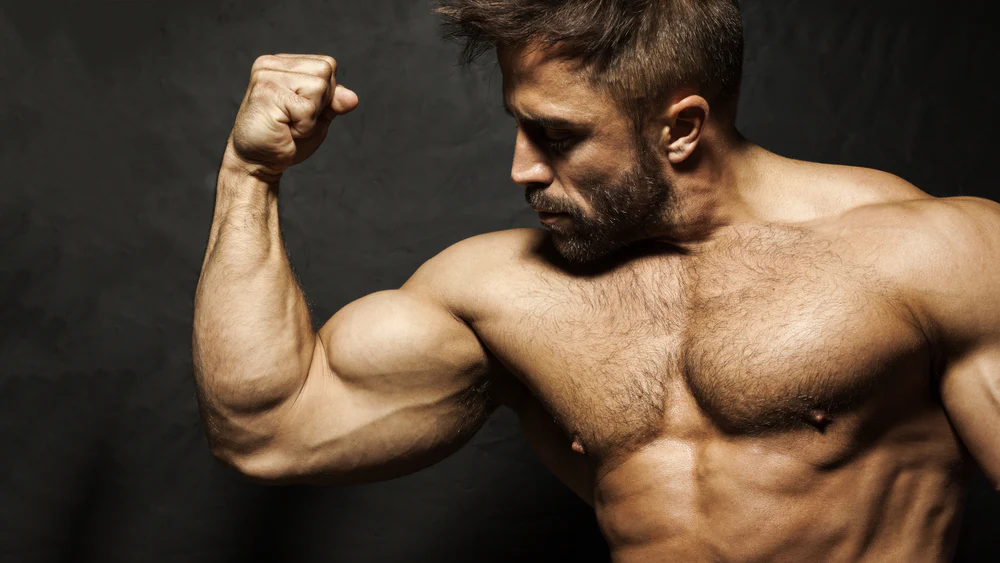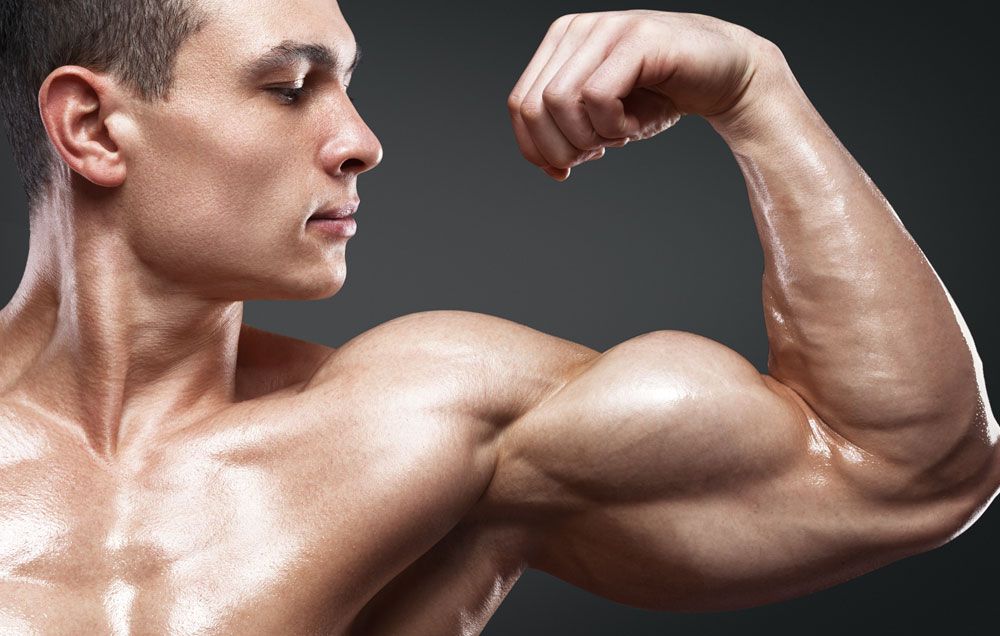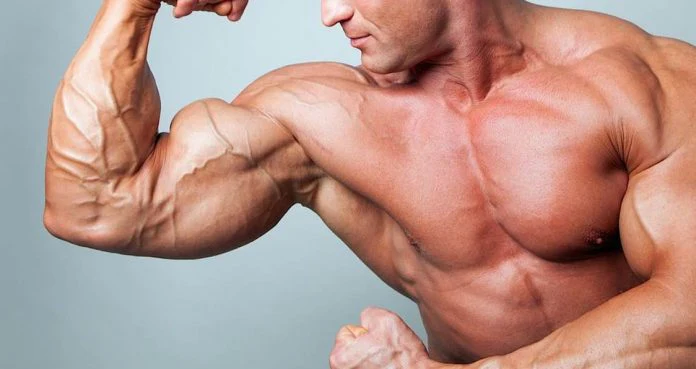Biceps Peak Training Guide: How to Build Taller, More Defined Arms
If your biceps look thick from the front but seem to vanish in a side pose or double biceps shot, you’re not alone. Many lifters develop overall size but lack the tall, eye-catching biceps peak that defines elite arm aesthetics.
The biceps peak gives your arms that rounded, high-rising shape that makes them pop from any angle — especially in side profiles and front double biceps poses.
And while genetics play a role in determining how high your peak can grow, the right training strategy can significantly enhance its size, shape, and visual impact.
This in-depth guide breaks down exactly how to train for a taller biceps peak, with science-backed techniques, smart programming, and practical takeaways — whether you’re lifting at a commercial gym or building from your garage.
What Actually Creates a Biceps Peak?
Let’s start with the anatomy. Your biceps brachii has two heads:
- Long Head: Runs along the outer side of the upper arm. It contributes heavily to the height and shape of the biceps peak.
- Short Head: Runs more medially (inner arm) and provides width and thickness to the biceps when viewed from the front.
To maximize your biceps peak, you need to target the long head specifically — using strategic angles and tension-based movements.
What Influences Peak Development?
- Genetics: They determine your biceps insertion point and how high your peak can rise. But most lifters never reach their genetic potential anyway — so don’t let this be your excuse.
- Training Strategy: You can drastically improve your peak development with the right focus on stretch, range of motion (ROM), and contraction.
- Consistency: Like any muscle, the biceps responds best to progressive overload and intelligent volume over time.
Top Exercises for Building a Taller Biceps Peak
To grow the peak, you need to stretch the long head under load, and then fully shorten it under control. That means choosing exercises that place the elbows behind the body, biasing the long head and forcing it to contract through a long range.
🔹 1. Incline Dumbbell Curl
- Performed on a bench set at a 45–60° incline
- Arms hang behind the torso, placing the long head on deep stretch
- Curl with full supination and a hard squeeze at the top
✅ Why it works: This is one of the purest stretch-based curls for long head emphasis. Use light to moderate weight, focus on slow eccentrics, and don’t cheat.
🔹 2. Spider Curl (EZ-Bar or Dumbbell)
- Chest supported on an incline bench (facing forward)
- Arms hang directly in front of you, eliminating momentum
- Full focus on the shortened, contracted position
✅ Why it works: Forces peak contraction. Pairing this with incline curls gives you the perfect stretch-to-squeeze combo for maximal long head activation.
🔹 3. Bayesian Cable Curl
- Set up with cables behind your body, arms extended back
- Curl forward with constant tension
- Keep the elbow stationary and chest proud
✅ Why it works: The cable keeps tension through the full ROM, especially in the stretched position. Great as a second or third movement in your peak workout.
🔹 4. Drag Curl (Barbell or Cable)
- Instead of curling the bar upward, drag it along your torso
- Elbows stay pulled back, avoiding forward travel
- Use a straight or EZ-bar with shoulder-width grip
✅ Why it works: Shifts tension away from shoulders and onto the outer head by locking elbows behind the body.
🔹 5. Zottman Curl
- Curl up with a supinated grip, lower down with a pronated grip
- Slower tempo maximizes muscle control
- Works biceps and forearms synergistically
✅ Why it works: Not peak-specific per se, but helps refine shape and definition. An excellent finisher that taxes both heads and enhances overall biceps detail.
Biceps Peak Training Programming: How to Structure Your Workouts
Building a taller biceps peak requires more than just choosing the right exercises. You need to program them effectively for long-term results.
📅 Frequency:
- Train biceps directly 2–3 times per week
- For advanced lifters, consider pairing biceps with back or on dedicated arm days
🔁 Volume:
- 10–14 total sets per week for biceps
- Include 1–2 peak-focused exercises per session
🔢 Reps & Tempo:
- 8–15 reps per set with slow negatives (3–4 seconds)
- Use pauses at peak contraction to enhance time under tension
Avoid These Common Mistakes:
- Swinging the weight: This cheats tension off the biceps and onto the front delts
- Cutting ROM short: You’re robbing yourself of the long head stretch and contraction
- Going too heavy: The biceps peak responds best to control, not brute force
Sample Peak-Focused Biceps Workout
Here’s a full biceps training session specifically designed to maximize long head tension and grow your biceps peak:
| Exercise | Sets | Reps | Focus |
| Incline Dumbbell Curl | 4 | 10–12 | Full stretch + eccentric control |
| Spider Curl (Dumbbell) | 3 | 12 | Peak squeeze + strict form |
| Cable Drag Curl | 3 | 12–15 | Constant tension + long head bias |
| Zottman Curl | 2 | 15 (burnout) | Shape, endurance, and forearms |
💡 Rest 45–60 seconds between sets. Focus on quality reps, not speed or ego lifting.
Pro Tips to Maximize Biceps Peak Growth
To truly bring out your peak, you’ll need more than just exercises. Here are some advanced strategies straight from the bodybuilding trenches:
✔️ 1. Full Stretch, Full Squeeze
Always chase a complete range. Half-repping won’t cut it here — the peak thrives on extreme stretch and maximum contraction.
✔️ 2. Unilateral Focus
Use alternating or one-arm curls to isolate the weaker arm and improve symmetry. It also allows better mind-muscle connection.
✔️ 3. Training the Peak First
When your goal is improving the peak, prioritize it early in your session. Hit incline or Bayesian curls right after warming up to train the long head while you’re fresh.
✔️ 4. Stretch-Overload Supersets
Pair a stretch-heavy movement with a squeeze-focused one for massive pump and neural drive.
Example superset:
- Incline Dumbbell Curl → Spider Curl (3 sets, back-to-back)
✔️ 5. Mirror Feedback — Without Cheating
Use the mirror to monitor elbow and wrist position — but don’t break form chasing the pump. Visual feedback helps with technique if you stay honest.
Can You Really “Build” a Peak?
Let’s be clear: you can’t change your biceps insertion points — those are genetic. But what you can do is maximize the thickness, density, and fullness of the long head, which enhances peak height and visual roundness.
For most lifters, their peak hasn’t “topped out” — it simply hasn’t been trained properly. Once you focus on smart programming, stretch-based mechanics, and strict form, your peak will rise in both shape and volume.
Final Word: Grow Your Biceps Peak With Purpose
The biceps peak isn’t reserved for genetic outliers or seasoned pros. It’s attainable — if you train strategically and consistently.
Every great arm shot — from Arnold’s iconic side chest to modern-day bodybuilding champions — owes its jaw-dropping effect to a well-developed long head. If you want your arms to look more sculpted, athletic, and 3D from all angles, now is the time to start targeting your peak with intent.
Stretch hard. Squeeze harder. Train smarter.
Your biceps peak won’t grow by accident. But with the right tools and tactics, it will grow — rep by rep.
🔗 Related Articles:
- Best Biceps Exercises Ranked by Function
- Long Head vs Short Head Biceps
- Biceps Training Mistakes That Kill Gains
- Dumbbell-Only Biceps Workout
- Complete Arm Training Guide




